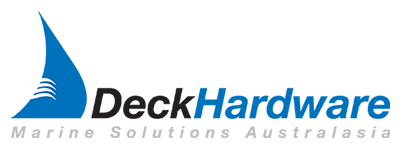Rigging the Whisker Pole
Author: Forespar Date Posted:24 January 2023
Whisker poles do need a topping lift to support their weight, especially in light air. Gravity will pull them down and aft on the jib sheet if not supported.
The topping lift keeps the pole level and allows for better sail shape. If you do not have a specific pole topping lift available, use a staysail halyard or second jib halyard. Spinnaker halyards can be used briefly, but as they exit above the headstay and outside the fore-triangle, they may chafe on the headstay if used for long periods of time.
Usually, you do not need a specific fore-guy or after-guy. By moving your jib leads as far forward as possible (even athwart ships of the mast) this will give the jib sheet a sharp angle up to the pole and help keep it from “skying” or wanting to rise or lift in the puffs. By taking the “lazy” sheet and turning it on a forward deck cleat-don’t cleat it off, just use the cleat as a turning block-you can then take up load from the cockpit. This will help keep the pole down and forward without the need of rigging another line. If the pole is to be flown for long periods, then a pole after-guy and fore-guy should be rigged separate from the sheet.
There are very good reasons to do this. First, if the pole is being used in trade-wind conditions, squalls are likely, usually at night! Second, if the pole is set with the sheet allowed to run freely through the outboard end, the after-guy is holding the pole back, the fore-guy is holding the pole down and forward and the topping lift is holding the pole up, you can furl up the jib at will without ever touching the pole or having to go forward. The pole is secured so you can concentrate on the main, the mizzen or any other gear flying about until the squall passes. Then simply unfurl the jib and you never have to touch the pole. This system worked well on a 2300-mile passage to Hawaii.
Note: The larger Line Control whisker poles come with a center-pole wire “strap” that can be used to rig a bridle for the topping lift. This bridle can be made of a small diameter scrap piece of line. The bridle is attached to the outboard end and the center pole wire strap. By rigging this bridle, the pole is supported in the middle as well as the outboard end.
This is a better topping lift support method in heavy air and sea conditions. The reason Forespar® does not supply this line is simple. These are telescoping poles and we would have to make the bridle fit the longest telescoped length. When the pole is stored, this extra line would foul. Rig this bridle to length as needed. Whisker poles should be flown with the jaws facing down. When taking down a whisker pole, the jib sheet usually wants to drop down-and-out of the end fitting. Spinnaker poles are flown jaws facing up, as the spinnaker sheets usually want to lift up-and-out of the end fitting. The pole won’t know the difference but you may find it easier to set and take down with the ends in the proper orientation.
Trimming
Whisker poles are flown on the opposite side of the mainsail when sailing virtually dead downwind. You can tell when you need a whisker pole when the headsail stalls and flops about limp and useless. Setting the pole to “windward” will project the sail out from behind the mainsails “wind shadow” and allow it to fill in clear air. The pole should be flown level (Thus the need for mast track and cars!) and at the same relative angle to the wind as the main boom. In other words, the whisker pole should be out, opposite the boom at the same angle. As you pull in the mainsail, you would ease out the whisker pole and visa versa. As the pole comes back, the main goes out. Think of the whisker pole as an extension of your boom forward of the mast.
When the relative wind angle comes around, and the headsails leach begins to soften, or the pole is so far forward that the sail cannot set properly, it’s time to take down the whisker pole. You are now coming onto a “broad reach” and will not need the pole to keep the headsail filled. You should not fly a whisker pole on the same side as the main boom. Doing so may jeopardize the pole as your angle of heal may cause the outboard end of the pole to drag in the water.
